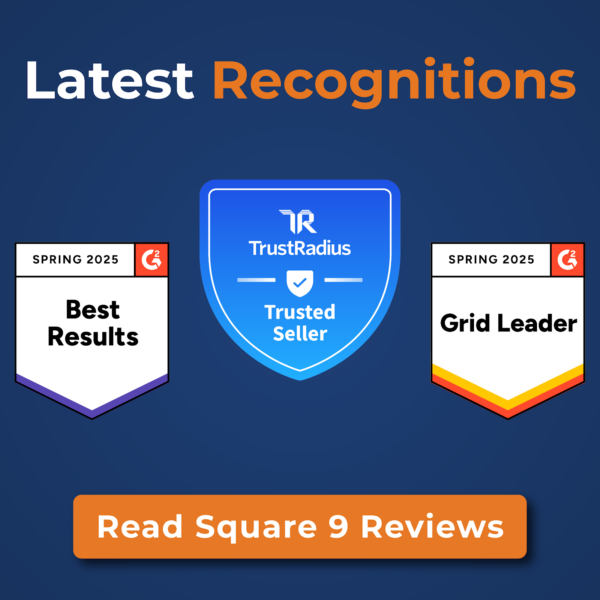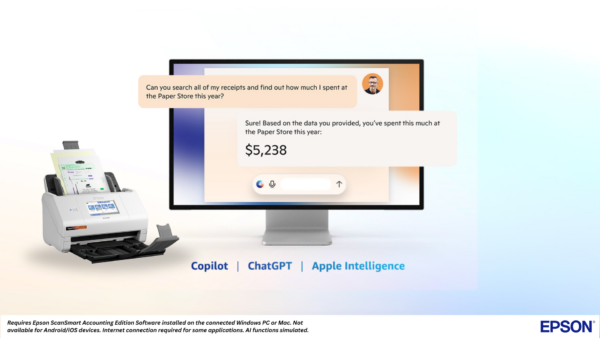The landscape of work and information access is changing dramatically.
In an era of rapid technological advancements, the influence of digital media on the habits and preferences of a younger generation of workers cannot be understated. As traditional media, including print and other physical media, continues to decline, digital transformation has emerged as the primary driver reshaping how information is consumed. Younger workers, in particular, are reshaping how information is consumed. They have become increasingly reliant on digital platforms, including search engines like Google and Bing, social media networks, and AI-powered tools like ChatGPT, to navigate the vast digital landscape to expand their knowledge.
One Midwest manufacturer, who asked not to be identified, takes a “soundbite” approach: An administrator invests the time to pore over, review, and condense relevant reports for quarterly co-worker perusal. Some companies still buy one print subscription and pass around industry trade journals to multiple employees. That, however, is not the norm.
The shift toward digital media is also transforming how information is accessed, offering convenience and immediacy. Long gone are the days of flipping through printed pages or waiting for the morning newspaper. Today, a quick online search or scrolling through social media yields a wealth of information from all corners of the world. However, this quick and easy access to an abundance of digital information brings with it the challenge of navigating through the overwhelming influx of content and managing this information overload.
The Rise of Digital Media
There was a pronounced shift away from print and toward digital media during the first two decades of this century. The impact on the printing and publishing industries has been devasting:
- Between 2002 and 2020, newspaper publisher revenues dropped by 52%, according to the U.S. Census Bureau, as weekday circulation of U.S. daily newspapers dropped from 55.8 million in 2000 to 24.2 million by 2020.
- Estimated revenue for periodical publishing, which includes magazines and industry/trade publications, fell by more than 40%.
With the massive popularity of video-streaming services, the hit to VHS tape/DVD disc rental bottom lines has been even more dramatic. In 2020, revenue was $1.1 billion—about one-ninth of what it was in 2002 ($9.4 billion). (Who remembers video stores?) In contrast, the global video streaming market size is projected to grow from more than $500 billion this year to nearly $2 trillion by 2030, reports Fortune Business Insights.
Web Searches and Social Linkage in the Digital Media World
The Cannata Report interviewed six professionals between the ages of 27 and 41 to gauge how they and their companies are consuming and distributing information these days with an emphasis on digital media. A 33-year-old accountant friend of mine admits to using Google’s search engine for everything from financial terminology to Microsoft Excel spreadsheet shortcuts.
At office-tech dealership Stone’s Office Equipment in Richmond, Virginia, 27-year-old Carson Stone uses the internet incessantly. “Whether it’s for personal or business [purposes], I search for everything online,” said the solutions specialist. For a more historical perspective, consider that the domain google.com was registered around Carson’s first birthday, and Apple’s first iPhone was released in 2007, before he entered middle school.
Casey Lowery is 14 years older than Stone. “I primarily search Google for definitions and new technology,” said Lowery who, at 41, has been chief operating officer at dealer Applied Innovation in Grand Rapids, Michigan, for the past two-and-a-half years. “For example, I recently researched analytics and looked up information on Power BI [business intelligence software from Microsoft] and its dashboard tools.”
Big-tech data reveals that Google is the browser of consumer choice, globally processing more than 99,000 searches every second, which translates to some 8.5 billion searches daily (Internet Live Stats, 2022). Google’s dominant market share now exceeds 93%. To keep its search engines churning 24/7, Google operates some 2.5 million servers at 30 data centers in 10 countries throughout the world.
Interestingly, the almost-under-40 crowd doesn’t seem overly preoccupied with internet privacy concerns. Security-conscious competitor DuckDuckGo’s worldwide search-engine share registers at under 2% (slightly less than Yahoo’s), according to Statcounter, while Microsoft’s Bing comes in at approximately 6%. Google can be an excellent source for pretty much anything in the office technology segment, including competitor intelligence. It’s also easy for peopIe to get product specs online, too, which means they don’t have to call a supplier.”
It’s not unusual for younger workers like Applied Innovation’s Lowery to use YouTube as a how-to resource. The online video-sharing provider was acquired less than two years after its 2005 launch by Google LLC. Widely used by do-it-yourselfers as a video instruction manual of sorts, YouTube has become the second most visited website (behind its corporate parent). Several dealerships have their own YouTube channels. “YouTube is great in the B2B setting,” said Lowery. “People can type in ‘change settings on a Ricoh [MFP]’ and boom: There it is!”
Stone’s Office Equipment maintains a business Instagram account, which is used to “plant seeds,” Stone said. “Instagram is more for brand awareness and brand recognition than anything else.” However, the dealer’s management decided to shut down its Twitter profile. “Twitter became too polarizing, and it just wasn’t worth it,” noted Stone.
Another popular social media platform in the B2B world is LinkedIn, which people use as a resource, as well as for networking and recruiting purposes, sometimes including their own job quests. Stone’s has a company page, through which it pushes educational content to vertical markets. “We encourage our reps to share and repost with hashtags,” said Stone.
Lowery admitted trying “not to randomly ‘doom-scroll’ on LinkedIn.” He cautions that aimless pursuits can waste substantial time and cut into work-day productivity. Kristal Cook (34), regional solutions manager at ACDI, couldn’t agree more. Falling into the social media trap has been a major distraction for her in the past.
“I’m on a personal journey to spend less time on social media,” she confessed. To that end, Cook has uninstalled popular apps (Instagram, Snapchat, and TikTok, for example) from her mobile phone.
Added Cook, “I prefer interaction,” which is why she uses LinkedIn as her primary social media tool for business. In a “Coffee with Kristal” segment posted on May 24, 2023, for instance, she discussed what the Ricoh and Toshiba merger means for you and your company. A self-described lover of rollercoasters, Cook’s profile reflects her personality. “It’s important to be genuine and professional at the same time,” she observed.
New this year, Cook has assembled a monthly partner roundtable for information and strategy sharing. Leaders from six mid-sized, central U.S. dealers first met virtually on May 8 and hope for an in-person gathering in the fourth quarter.
Too Much Email in the Age of Digital Media?
It can be difficult to maintain focus in a digital age where people are tracked constantly by smartphones, Fitbits, data, and algorithms, and receive persistent app notifications. Indeed, digital fatigue and email clutter are real phenomena. As Stone pointed out, “Email is more professional, but it can get lost.”
However, a plus-forty manager, who wished to remain anonymous, isn’t so sure the problem is a function of overload. “For me, it comes down to email etiquette. The majority of younger employees have no sense of urgency,” the rap being that they’re not in the habit of checking email frequently enough. Hiring managers should be careful not to stereotype, though, based on birth dates or perceived generation gaps because realities vary.
For example, ACDI’s Cook is one exception to the generalized email rule. Despite her relative youth, she basically lives on good, old-fashioned, electronic mail. “Emailing is about 80% of what I do every day,” she said. Most of that involves communicating with the company’s partners.
With 24/7 connectivity, finding a work-life balance is perhaps more challenging than ever. “A lot of our employees refuse to access business email on their personal smartphones,” Stone pointed out, which is reminiscent of people not bringing work BlackBerry handhelds into their homes two decades ago.
Then, there’s the extreme opposite approach. Cook doesn’t hesitate to provide the number to her personal phone, which she uses for work. “I’ve found that partners typically are respectful about not calling after business hours,” she reported. That is unless they’re in a real bind. “If I get a call after work hours, I pretty much know it’s important.”
To better facilitate collaboration among work teams, some firms, including Stone’s Office Equipment, are bucking email communication by using alternative technology hubs. Instant messaging systems like Google Chat, Microsoft Teams, and/or Slack resemble standard texting, so there is a comfort level among some employees, according to Stone. Featuring workspace chat and videoconferencing, file storage, and application integration services, these platforms offer the ability to integrate people, content, and tools to make team members more engaged, and, hopefully, more effective.
AI Tech on the Rise in the Digital Media Age
Despite their relative youth, most of the millennials and Gen-Z’ers we spoke with still find the increasing presence of artificial intelligence (AI) technologies a tad disturbing and even creepy. Sam Altman, chief executive officer of ChatGPT creator OpenAI, appeared before a Senate hearing in May to discuss chatbot risks.
ChatGPT, the chatbot developed by OpenAI and released last fall, is being embraced by scores of workers across generations. (The name ChatGPT combines “Chat,” referring to its chatbot functionality, and “GPT,” which stands for Generative Pre-trained Transformer, a type of large language model. “I can see the potential for its usefulness as a time-saver,” proclaimed one mid-30s worker who preferred to remain anonymous, “in terms of writing reports like performance appraisals, where a substantial amount of repetitive language is used. But I’m not there yet.”
Many others are there. ChatGPT already boasts more than 100 million curious users, and the website is generating some 1.8 billion visitors per month (February 2023–April 2023), according to Exploding Topics. “I think AI is super cool,” exclaimed Applied Innovation’s Lowery, “but it’s just not savvy enough yet. I’ve played around with the ChatGPT interface for cold-call scripts and bullet points for recommendation letters. We have partners using it.” He encourages fellow dealers to type “managed services” into the prompt to see what populates.
Stone is a fan, too. “I’ve been using ChatGPT for network-type missions for the past three to four months just to see what it spits out,” he explained. “It’s faster than calling another technician.” He has used AI technology to create scripted LinkedIn posts, too.
Ignore AI at your own peril, warned ACDI’s Cook. “My husband is a super nerd, and he says AI is the biggest thing for business since the internet. It’s a game changer,” she said. OpenAI’s optimistic CEO Altman told U.S. senators that the technology represents a “printing press moment” for America and the world. Cook added that she has her reservations: “This is the stuff of scary sci-fi movies!” Still, ACDI’s ScanShare Capture product employs AI.
With only six years in the industry, “I’m like a ‘baby,’” Cook said, “and AI is helping me to fill in my experience gaps.” How? ChatGPT allows her to improve on weaknesses by asking questions she may not want to publicly admit she has. In the end, “it helps me to be a better advisor, a better resource, to my partners,” she said.
Reading Habits in the Digital Media Age
Reading preferences are subjective and seem to be all over the place, albeit mostly across digital media. Cook estimates she spends about one hour per week skimming industry trade journals (including The Cannata Report) and related resources on a laptop. Her data analyst counterpart, who says he doesn’t have time to flip through a physical book, has begun listening to audiobooks during his daily commute or while working around the house. Pop in the earbuds, and he’s off to the multitask race for information. Cook shrugged this method off, “I’ve tried listening to audiobooks. Let’s just say I don’t love it [the experience].”
Applied Innovation’s Lowery said, holding up a copy from The Cannata Report from his desk, “I’m smart enough to know that I don’t know everything, so I really do try to read. There are so many ways to get information, he noted, citing the Copier Dealers Association (CDA) and Business Technology Association (BTA) as his go-to resources. “The manufacturers have ‘deeper pockets’ for market research,” he said. “And, in-person events are another great way to learn.”
Lowery balances out his reading with the Audible audiobook and podcast service. Presently, he’s listening to Marcus Sheridan’s “They Ask, You Answer: A Revolutionary Approach to Inbound Sales, Content Marketing and Today’s Digital Consumer.” “I like NPR’s ‘TED Talk’ segments, too, because they’re fairly short, 30 minutes or less,” said Lowery. “Unless I’m driving, two- and three-hour podcast episodes can be tough to consume.”
Stone, who is in his 20s, won’t read cover-to-cover but instead engages in what he calls targeted reading. He finds specific passages and, 90% of the time, is reading online, on a computer or laptop, where he can make use of the search function. He also is a sporadic listener of podcasts. But when it comes to market info, he’d rather talk to other dealers and bounce ideas off them.





